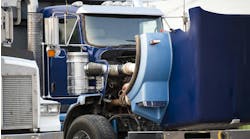When the subject turns to the topic of taking risks, I’ve never been one that hopes the current saves the ship when the iceberg is clearly in view. In other words, if I always trust my instincts when I think the chances of survival are slim to none given the current course, it always works out in my favor. Of course, I’ll offer my opinion to the captain and encourage others to join me on my way to the lifeboat, but I don’t plan on dying a hero or a fool.
Come to think of it, I’m not planning on dying at all. I know it’s going to happen and when it does, my time will be done, so I’m not worried about it. Of course, that doesn’t mean I lose all sensibility and eat cheeseburgers every day while I drive around without my seat belt smoking unfiltered cigarettes with a constant supply of energy drinks, coffee and chewing tobacco. Knowing what I know, there are just certain risks I am unwilling to take.
For example, when I was a much younger (and dumber) technician, I never put a tubeless tire in a safety cage. There weren’t any pieces that could come flying off, so why bother? Now that I am a much older and wiser technician, I never go near a tire being inflated outside a cage because there is always a chance that something could go wrong. And if something goes wrong and the tire assembly is unrestrained, the end result can get ugly. In fact, 12 people died over the past two years as the result of a tire separation that occurred outside a safety cage. That’s all I need to know.
Believe it or not, that isn’t the biggest risk to the life of someone who handles truck tires. There is an epidemic in the industry that has cost 21 people their lives since the beginning of 2011. And when you consider that 11 of the 21 fatalities were employees of a trucking company, it should serve as a reminder that every person who services or handles truck tires in any way must be trained, regardless of their employer.
So, what’s the number one risk to a technician? Vehicle lifting. That’s right. According to OSHA, jacking up the tractor or trailer is the number one risk to employees who service truck tires. Consider this: Double Springs and Lincoln are two small towns outside Birmingham, AL. In September 2012 over a period of four days, two employees of two small trucking companies in two small towns about two hours apart died because a couple of jacks failed and the vehicles fell on top of them. What are the odds? Apparently, they are pretty good.
The truth is that of the 21 fatal accidents involving lifting a vehicle since January 2011, only one of them was associated with a jack stand. The descriptions for the rest all read the same: jack failed, truck slipped off jack, blocks shifted, etc. In the simplest terms, jacks are lifting devices designed to raise and lower, while jack stands are designed to support the weight and mechanically lock out the load.
When technicians do not use a jack stand, they are literally putting their lives into the hands of a rubber O-ring or gasket. All jacks work the same and there is a rubber seal at the bottom of the piston that is more or less carrying the load when the jack is used as a support device. If that seal fails, gravity takes over and when someone happens to be under the vehicle at that point in time, the OSHA fatality list typically gets a little bit longer.


